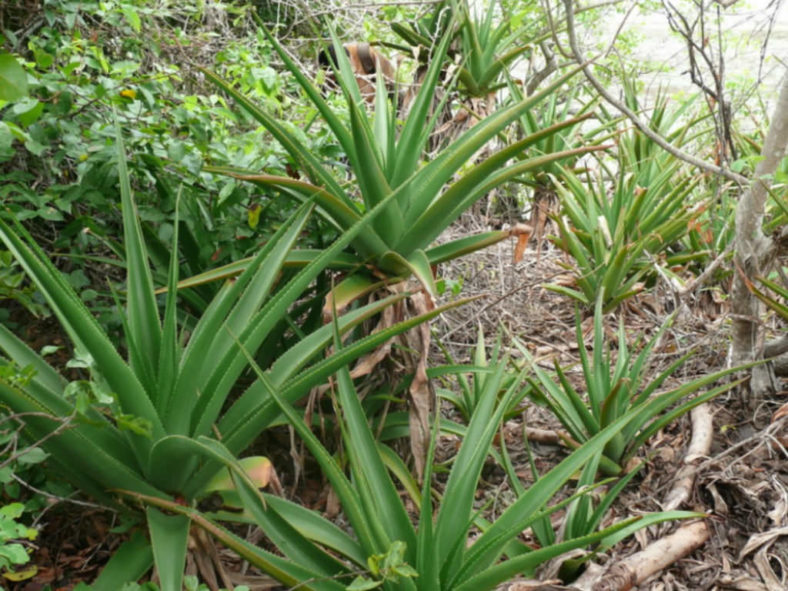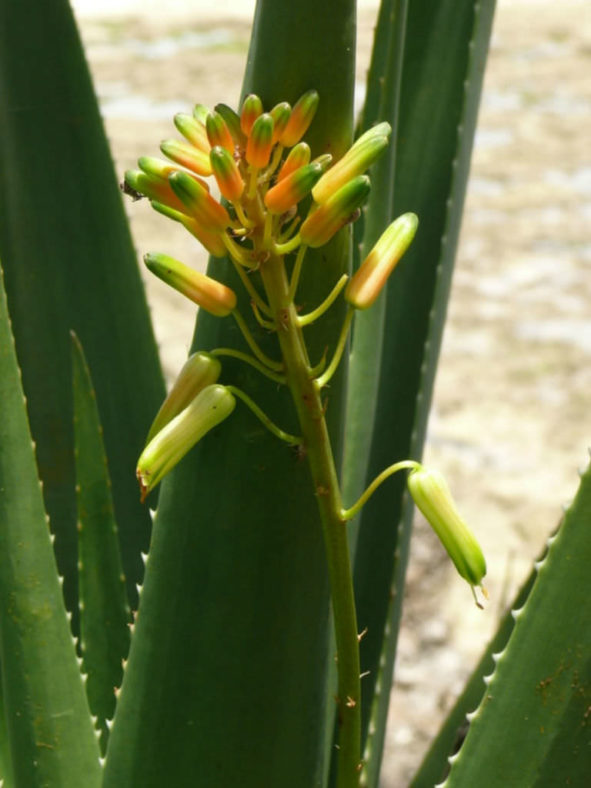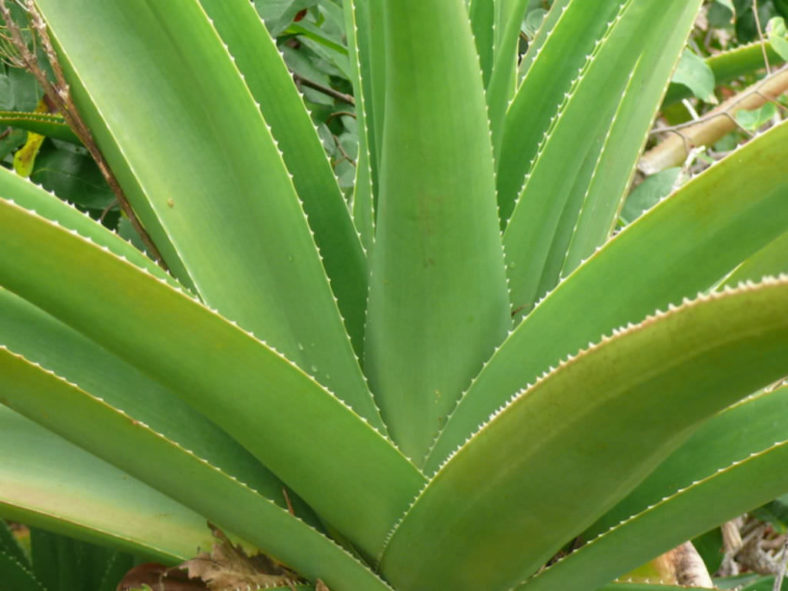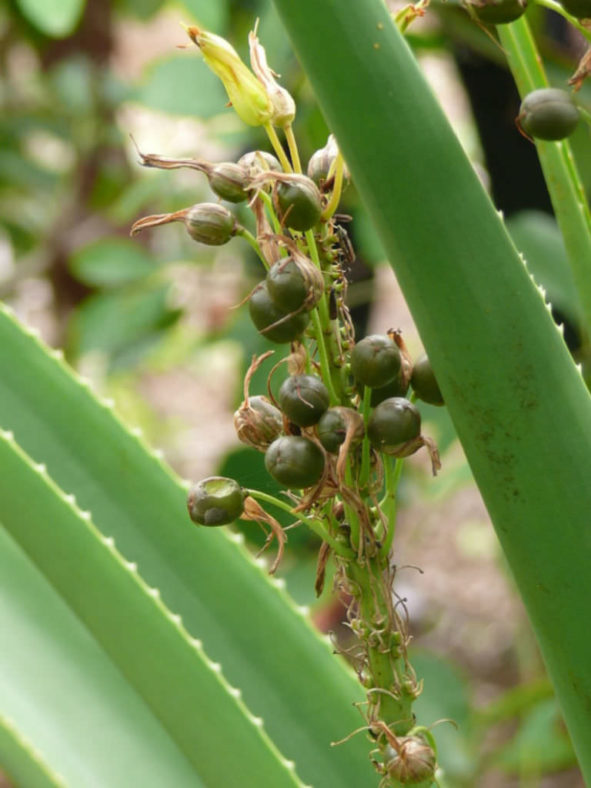Scientific Name
Aloe pembana L.E.Newton
Common Name(s)
Pemba Aloe, Pemba Island Aloe
Synonym(s)
Lomatophyllum pembanum
Scientific Classification
Family: Asphodelaceae
Subfamily: Asphodeloideae
Genus: Aloe
Etimology
The specific epithet "pembana (pronounced pem-ba-AH-nuh)" means "of or pertaining to Pemba" and refers to Pemba Island, where this species was first discovered.
Origin
Aloe pembana is native to Tanzania, formerly widespread across Pemba and surrounding islands, but is now restricted to a small area on Misali Island.
Description
Aloe pembana, formerly known as Lomatophyllum pembanum, is a succulent plant with short, erect stems and fleshy green leaves with white-toothed margins. The leaves are arranged in a rosette that offsets from the base, forming large clumps with age.
The red flowers appear in summer and are arranged in racemes in multi-branched inflorescences.
Aloe pembana is part of the Aloe group that bears fleshy berries, formerly classed as a separate genus Lomatophyllum.

How to Grow and Care for Aloe pembana
Light: When growing Aloes indoors, place your plants in a southern or southwest-facing window with plenty of bright, indirect light. Outdoors provide light shade, especially during the hottest parts of the day.
Soil: Plant Aloes in well-drained soil specially formulated for cacti and other succulents, or make your soil mix. Drainage is essential because too much moisture around roots can cause root rot.
Hardiness: Aloe pembana can withstand temperatures as low as 20 to 50 °F (-6.7 to 10 °C), USDA hardiness zones 9a to 11b.
Watering: These succulents need regular watering but are very tolerant of drought conditions for short periods. Water deeply, but only when the soil is dry. Cut back on watering during the winter months.
Fertilizing: Aloes generally do not require fertilizer but may benefit from the extra nutrients.
Repotting: These plants are not particularly fast-growing and will only rarely need repotting. Repot them in the spring in a container a few inches larger in diameter every few years to keep them from becoming rootbound.
Propagation: Propagating Aloe can be done using offsets, cuttings, or seeds from a mature plant.
Learn more at How to Grow and Care for Aloe.
Toxicity of Aloe pembana
Aloe pembana is not listed as toxic for people and pets.
Links
- Back to genus Aloe
- Succupedia: Browse succulents by Scientific Name, Common Name, Genus, Family, USDA Hardiness Zone, Origin, or cacti by Genus
Photo Gallery
Click on a photo to see a larger version.


